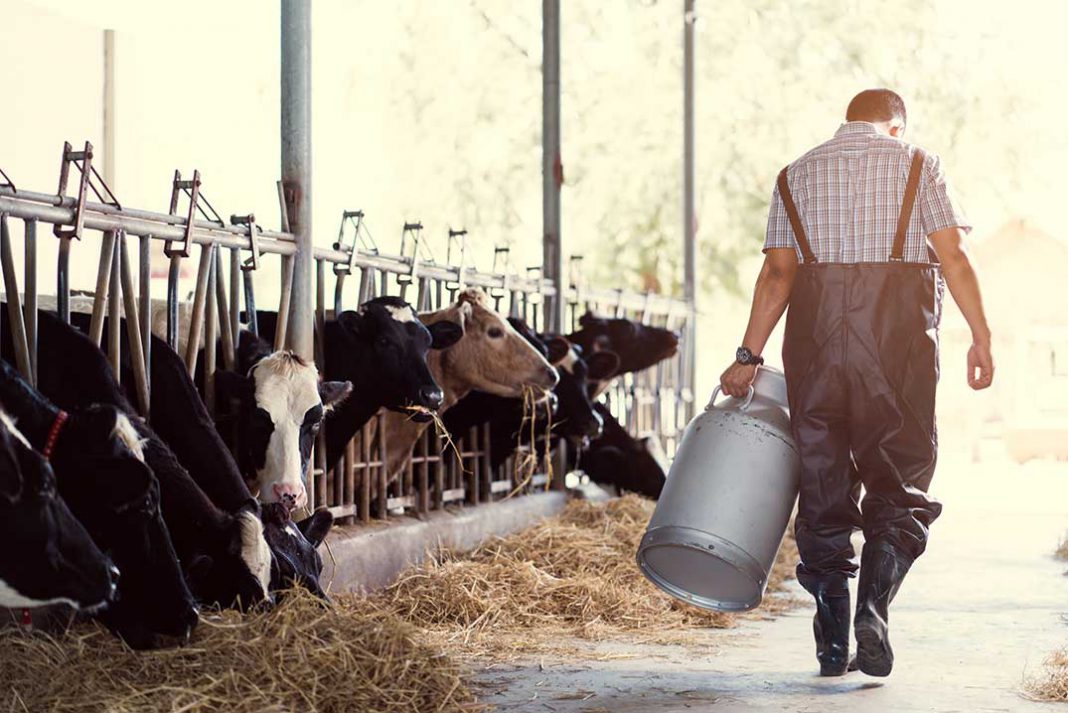Agrees with recent labour report, says finding willing workers difficult
GORE BAY—Labour market statistics for the districts of Manitoulin, Sudbury and the City of Greater Sudbury show an aging workforce, especially in the farm industry.
As printed in last week’s newspaper, one notable statistic for Manitoulin Island was the data from Statistics Canada showing that workers in the “general farm worker” category—National Occupational Classification (NOC) 8431—were exclusively older than 55 years of age.
“I do know that it’s the same all across Ontario that the average age of the farmer is skyrocketing. It seems like there’s no younger people getting into agriculture. Few young people choose to stay on Manitoulin these days, whether for agriculture or other work,” said Andrew Vokes, president of the Manitoulin Youth Agriculture Association (MYAA).
However, Mr. Vokes refuted the claim that 100 percent of Manitoulin’s farm workers were older than 55, adding that he knows at least 20 young people who currently work on Manitoulin farms.
While this is likely the case, the report is limited in that it only accounts for the information people provided when completing their census forms in 2016. In the general farm worker category, people who are not formally employed such as those helping out with a family farm would not be included in the total.
In addition, there are separate categories for managers in agriculture (NOC 0821), harvesting labourers (NOC 8611) and agricultural service contractors, farm supervisors and specialized livestock workers (NOC 8252). Individual data for these NOC codes can be found through an internet search.
The aging farm population is a common trend across Canada. A 2011 Statistics Canada report about the demographic changes in Canadian Agriculture showed that only 8.2 percent of Ontario farms were operated by people younger than age 35. British Columbia had the oldest workforce in the country—only 5.4 percent of farms had people under 40 as their oldest operators.
In Ontario, the proportion of farms where the oldest operator was 55 years old or older in 2011 was 49.3 percent. Younger-run farms tended to be most prevalent in the output category of between $100,000 and $499,999 per year.
Mr. Vokes said rural culture is different on Manitoulin Island than in southern Ontario, where farming becomes a part of a family’s identity. He said he would like to see more of that culture on Manitoulin in the future.
“You’re born into the farm and you work there your whole life—it’s just known that you’re going to take over some day, it’s a really family-run thing and there’s almost a community culture of agriculture,” said Mr. Vokes.
“When you look at it, there’s almost a mentality of, ‘you’re born on Manitoulin, you’re going to leave to find a job and come back when you retire.’ I think that’s greatly impacting the workforce on Manitoulin, not just agriculture but the whole mentality of having to leave the Island to find a good job when there are certainly good jobs here,” he said.
Even if people are physically available in the district to work on farms, finding those who are willing to put in the effort required on a farm is a challenging task.
“A big problem is finding young people who want to work—not just who want jobs, but who actually want to work. Because working on a farm is hard physical labour,” said Mr. Vokes.
Part of the reason farming may be declining could be linked to the barriers to entry new farmers face. Purchasing farmland poses a greater financial risk for banks and lending organizations than a house, due to the greater chance of reselling a home.
In order to purchase farmland, prospective farmers would need to take out a lengthy mortgage, face five to six percent interest rates over decades and are required to offer a 25 percent down payment in order to get the mortgage.
“Young people don’t have that kind of money kicking around. If you want to be involved in agriculture, your parents have to be farming and you would wait to inherit the land. Unless you’re born into money, if you want to start out it’s next to impossible,” Mr. Vokes said.
More recent data from Statistics Canada may be showing a slight improvement, however. Compared to the 2011 farm survey, the percentage of farm operators older than 55 jumped from 49.3 to 55.1 percent. However, the proportion of farm operators under 35 years of age also increased, from 8.2 to 9.4 percent. Overall, though, the amount of farm operators in Ontario decreased 5.8 percent from 2011 to 2016, with a total of 70,470 operators in 2016.





